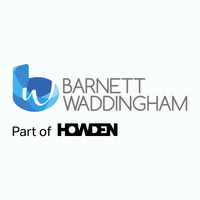How to engage employees with your recognition strategy
The shift to remote working caused by the Covid-19 pandemic has revolutionised the way people work. And this has prompted most employers to rethink how they recruit and reward their employees to attract and retain the best talent.
Recognition plays a huge part in employee happiness, with almost half (44%) of those asked in a People Management survey last year saying they left their last employer due to a lack of recognition. This highlights the important role communicators can play in driving culture as well as motivating and recognising people and performance.
The best communications are those where the copy and design elements work hand in hand to guide people – in this case, to the rewards on offer to them.
It is important to make communications accessible and inclusive as standard. In turn, it’ll help give you and your audience the desired engagement results.
Here’s 3 ways to find out if your employees are engaged in your recognition strategy.
1. Know your people
Start by digging into data to better understand the people you’re communicating with. By simply asking them what’s important and collaborating with internal teams, you’ll be able draw insights from the data around topics of interest, preferred channels and email send times, for example, to form part of your initial engagement strategy.
You could be communicating with somebody who has a visual impairment, making it difficult for them to read a printed newsletter in a certain font style, size or finish. You’ll need to bear this in mind when designing communications.
If your last communication about rewards didn’t land as well as expected, investigate and reassess messaging, timing, delivery and channel. Perhaps other internal communication activity at that time affected engagement rates, or your target audience prefer a specific communication channel. Take this into account for the best chance of success.
2. Tailor your communications
Depending on what the data reveals, segmenting your audience into groups, by age or length of service, for example, could be beneficial.
New joiners will need educating about the rewards on offer, so perhaps add an interactive webinar or presentation as part of their induction. And tailoring communications around your audience means tying these into external events or relevant times of the year such as promoting your pension in Talk Money week, a cycle to work scheme in Spring when people are more likely to think about getting out for exercise, or highlighting travel insurance in January when people are booking holidays.
Only by involving the people you have your recognition strategy in place for and asking them to give honest feedback - submitted anonymously if they prefer - will you be able to see how effective your communications are and what can be improved. It’ll also help you to assess the relevancy of your benefits offering and how competitive it is.
Once you know your audience, you’ll be able to decide on the best channels to use for maximum reach. Depending on what the data highlights alongside your budget, time and resources, you might opt for a multichannel approach or focus on online communications rather than hard copy.
3. Make your communications accessible
Offering alternative formats - such as video transcript, large font or braille – demonstrates you place your employees at the heart of your benefits communication design.
You don’t want any barriers for your workforce caused by inaccessible information. So, include clear visual links to where people can find out more, avoid jargon and use terms that aren’t specific to gender to prevent isolating anyone. People engage better if they believe there’s a real person at the other end, so write in the first person and be prepared to tweak copy for different audiences, adapting your tone of voice to suit each.
Use a variety of content including video and switch up how you present information to keep things fresh and exciting. By also including imagery that’s representative of a broad range of people, you’re celebrating the diversity of your employees and creating an all-inclusive culture.
Rewards are a great motivator for people and your benefit communications should reflect that. In the long run, meaningful communications will help drive engagement with your recognition strategy and provide improved outcomes for all.
Supplied by REBA Associate Member, Barnett Waddingham
Barnett Waddingham is proud to be a leading independent UK professional services consultancy at the forefront of risk, pensions, investment, and insurance. We work to deliver on our promise to ensure the highest levels of trust, integrity and quality through our purpose and behaviours.








